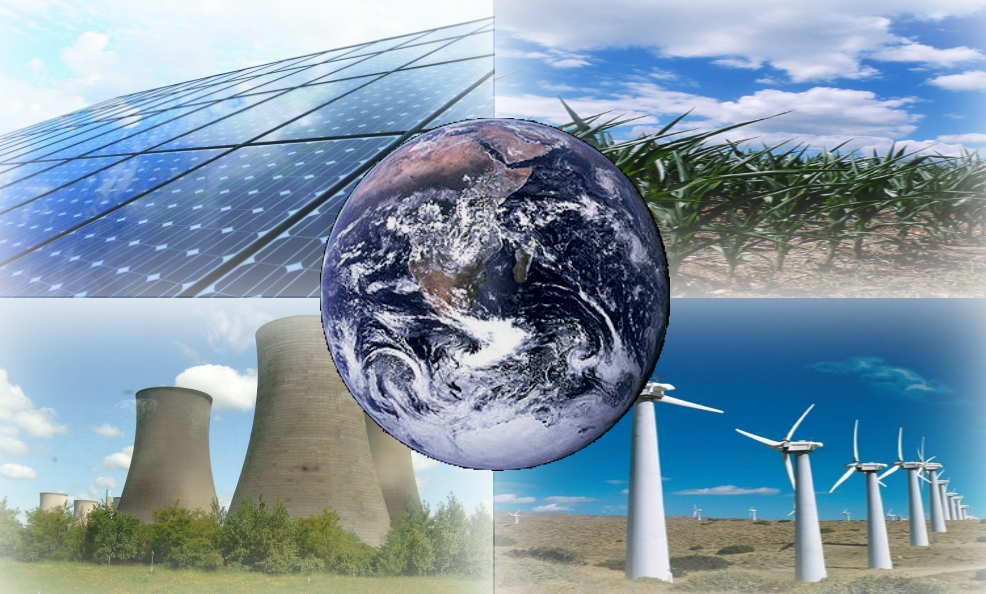
It is not hidden anymore that India has a vast supply of renewable resources and it has one of the largest programs in world for deploying renewable energy products and systems. India is the only country in the world to have an exclusive ministry for renewable energy development, the Ministry of New and Renewable Energy (MNRE) which has launched one of the world’s largest and ambitious programs on renewable energy. This article gives a brief overview of various renewable energy resources, their status in India, the socio-economic impact of renewable energy resources (RES), challenges associated with it and the future of RES in India.
Introduction:
Energy is regarded as the most important building block in human development and it is a key factor that influences the sustainable development of any nation. The conventional sources have an intimidating shadow on our present and future global safety, environmental values, health and society in general. Hence, there is an urgent need to promote renewable energy in Indian power sector. Renewable energy is the energy collected from renewable resources, which are naturally replenished on human timescale such as sunlight, wind, rain, tides, waves and geothermal heat. It is the cleanest source of energy with least carbon emissions or pollution. This helps on reducing reliance on coal and other fossil fuels. With the expansion of renewable energy, India can improve air quality, reduce global warming emissions, create new industries and jobs, and help to move world towards a cleaner, safer, and affordable energy.
Current Scenario of Renewable Energy in India:
Over the years, renewable energy sector has emerged as a significant player in India especially affecting the power generation capacity. This supports the government’s agenda of sustainable development while becoming an integral part in meeting the nation’s energy needs. For past two years, the Indian Government has taken several initiatives such as introduction of the concept of solar parks, organizing RE-Invest 2015—a global investors’ meet, launching of a massive grid connected rooftop solar programme, earmarking of Rs.38,000 crore (Euros 4 billion) for a Green Energy Corridor, eight-fold increase in clean environment cess from Rs.50 per tonne to Rs.400 per tonne (Euro 0.62 to Euros 5 per tonne) , solar pump scheme with a target of installing 100,000 solar pumps and programme to train 50,000 people for solar installations under the Surya Mitra scheme, no inter-state transmission charges and losses to be levied for solar and wind power, compulsory procurement of 100 per cent power from waste to energy plants, and Renewable Generation Obligations on new thermal and lignite plants, etc.
Advantages of India:
Renewable Energy Targets:
The Indian Government has increased the target of renewable energy capacity to 175 GW by the year 2022 which includes 100 GW from solar, 60 GW from wind, 10 GW from bio-power and 5 GW from small hydro-power.
Different Renewable Energy Sources (RES):
On 30 November 2015, Indian Prime Minister and the Prime Minister of France launched the International Solar Alliance. The ISA is an alliance of 121 solar rich countries and ISA aims to promote and develop solar power amongst its members and has the objective of mobilizing $1 Trillion (Euros 883 billion) of investment by 2030. Some large projects have been proposed by Indian government, and a 35,000 km2 (14,000 sq mi) area of the Thar Desert has been set aside for solar power projects, sufficient to generate 700 to 2,100 gigawatts. India is also the home to the world's first and only 100% solar powered airport, located at Cochin, Kerala. India also has a wholly 100% solar powered railway station in Guwahati, Assam.
Government initiatives:
Some initiatives by the Government of India to boost the Indian renewable energy sector are as follows:
Future Prospects of Renewable Energy in India:
With right investments in green technologies, we can say that India is well positioned to achieve the ambitious renewable energy targets. The pursuit towards cleaner energy will play a key role in supporting country’s transition to a full sustainable energy system. It is not a hidden fact that India is the world’s fourth-largest carbon emitter with its total population of 1.3 billion people with power sector contributing majorly to the same. However, in the recent years, India has made significant progress in field of renewable energy. Global climate change concerns have pushed the Government to develop a detailed plan for clean and sustainable power for all.
As per the research by University of Technology (LUT) in Finland, owning to an abundance of renewable resources, there is a great potential for India to move into a fully renewable electricity system by 2050. This is possible if we can employ sophisticated technologies. Renewable energy’s development in India looks bright as around 293 global and domestic companies have committed to generate 266 GW of solar, wind, mini hydel and biomass-based power in India over the next decade. This would entail an investment of $310 billion - $350 billion (Euros 27 billion to Euros 30 billion). The International Finance Corporation, the investment arm of the World Bank Group, is planning to invest about $6 billion (Euros 5 billion) by 2022 in several sustainable and renewable energy programs in India. With the investment potential of INR 15 trillion (Euros 187 billion) over the next four to five years in Indian power sector indicates immense opportunities in power generation, distribution, transmission and equipment. Further, renewable energy storage market in India is also expected to witness robust growth, over the next decade, once the cost of storage declines, which is likely to happen because of sheer volume growth through the electric vehicle route.
To conclude, we can say that India has plenty of renewable energy to bridge the gap between demand and supply so we must persistently put in efforts to harness various forms of renewable energy sources with the use of newer technologies to form a clean and safe place for our coming generations.
News 03-11-2019 22:53:28